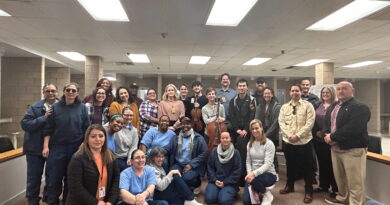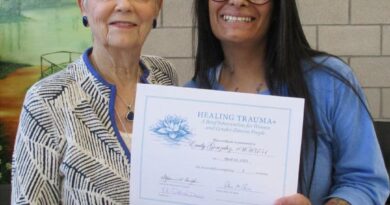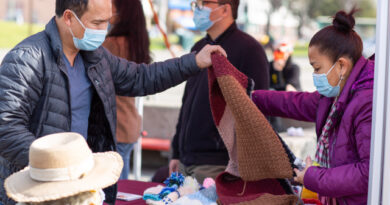Asian Pacific Islander Religious Group revitalized at CCWF

The Central California Women’s Facility Asian Pacific Islander (API) Religious Group held their first rebirth Luau on July 1, 2024. The event provided an opportunity to celebrate the group’s current membership and to explore one another’s cultural backgrounds.
The group restarted this year after almost a decade hiatus. API elder Simaima Ohuafi led the effort. Born on the friendly island of Tonga in 1978, Ohuafi was raised in the U.S. by her father, who instilled in her Tongan culture and traditions. Ohuafi’s goal was to revamp the group with a focus on education and creating unity between individuals from the many countries and communities represented under the API community.
The API designation refers to anyone who comes from or traces their heritage to the Far East, Southeast Asia or the Indian subcontinent. According to the California Commission on Asian and Pacific Islander American Affairs, approximately six million API people call the state their home. That’s around 15 % of the population, the third largest census grouping after Hispanic and white.
It is hard to say just how large California’s incarcerated API population is since the CDCR data collection has only tracked four demographic categories historically: Hispanic, Black, white and other. However, California Assembly Bill 943—passed in 2023—will require the CDCR to prepare and make publicly available more detailed, racially and ethnically disaggregated demographic data, starting Jan. 1, 2025. The various ethnic groups now organized under the category of “other” will be invisible no longer.
There are so many cultures that fall under the API umbrella, and the CCWF group hopes that more people will join them. They currently have an intimate roster of 17 members, with representatives from the Chinese, Filipino, Hawaiian, Japanese, Korean, Samoan, Tongan and Vietnamese cultures.

The group members meet weekly to educate one another about their ancestry, traditions and beliefs. Members are invited to learn one another’s cultural dances, songs and traditions. Each participant brings something to the table and walks away with a deeper knowledge and understanding of their peers. Michelle Jones, who is half Japanese, recently shared an interesting story about her grandmother, who had immigrated to the U.S. from Osaka, Japan, as a youth. According to family lore, she lied to enter the U.S. in order to get on her favorite TV show, “American Bandstand.”
The day started for the close-knit community with prayer following familiar greetings, smiles and hugs. Hawaiian music played softly as everyone trickled in, enjoying the bright decorations. Four tables sat connected in a row in the center of the room, each topped with a colored tablecloth and tropical, and pineapple centerpieces with utensils wrapped in napkins at each seat.
As tradition, though totally unplanned, would have it the youngsters sat together at one end of the table and the elders followed suit at the other. As the servers were preparing lunch, talking and laughter drowned out the music.
It didn’t take long to get a game of modern charades going. After the teams formed, the battle began. The feeling was all so familiar to the participants.
“I was around my own kind, not having to put on a mask,” Mia Sagote said. “I felt comfortable and as if I was around cousins I have not seen in a long time. Even though we were not raised together, we come from similar cultures.”
Once the food was served, everyone bowed their heads for grace. The group enjoyed a spread that included fried chicken, tri-tip, Hawaiian bread, watermelon, coconut, guava and apple drinks. They hope to have a more traditional luau meal in the future. Members ate and socialized, telling stories of being home with family. Bits of native tongue could be heard, followed by giggling.
With a huge smile on her face Leylani Simmons said,” It felt like home when I started eating with my hands!”
All of a sudden the group sang in harmony a beautiful Samoan song called “le Lava Lava” they had been practicing for months. The song describes the garments Samoans wrap around their bodies to show respect for their culture. Cheers erupted after three rounds of singing, the tempo speeding up each time. A sense of pride, joy and amazement filled the air.
True to Pacific Island tradition, in which younger family members show respect by cleaning up after a family gathering, Faalele Patea got up and started cleaning and taking down decorations as the day was coming to a close. She expressed how this day brought back memories of being at home helping her parents. As she reflected on her words, tears filled her eyes and another memory was made for everyone.
In closing, Ohuafi expressed her feelings of connectedness.
“I feel spiritually guided and supported by the administration and warden,” who herself identifies as Filipino- American, Ohuafi said. “Warden [Anissa] De La Cruz makes me feel like she’s culturally aware and cares about us.”




